(Editors note : author Bill Jakob is president of the Montauk Surfcaster’s Association)
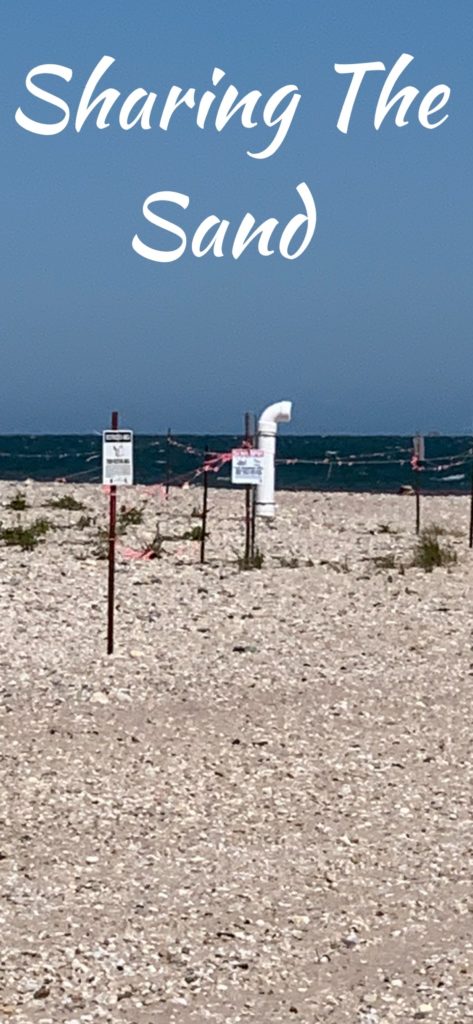
With the warming southwest winds an the increase of daylight surf fishing for Stripers seems to take over the thinking process and daily chores and work seem like they just get in the way of my fishing. I take to the ocean beaches to satisfy a deep craving ,a fix if you will for an addiction. Day or night if the tide is right I’m on it ! Pulling up to my favorite spot the curse of the beach buggy driving fishermen “Closed for Piping Plover” Like a knife driven deep into the heart a feeling of pain – not again!
It’s the time that the Piping Ploverreturns to the beaches, drawn by the hope of abundant food and a safe place to raise a new brewed of chicks.
The Plover despised by surf fishermen and beach goers from the Great Lakes to the shores of Florida. The Piping Plover this year seems to be worse than ever before and all with good reason.Parking my truck a good mile from my favored casting spot I began suiting up with breathable waders and dry top, plug bag and belt. Let us not forget bug spray and neck light, I was off- trudging across sugar like sand, I envisioned myself in an endless walk across the Sahara desert. Guided soon by string and ribbon, I arrived – out of breath Sweat pouring down my face and back. I sure needed a cold beer at this point, but would have settled for the that warm bottle of water I didn’t bring. My first cast hitting the rip I let my bucktail settle down
Into the ebbing current and started a slow retrieve. My mind now wondering on the plight of the Piping Plover and sharing the sand I have come to love.
The Piping Plower a tiny shore bird often seen quickly running in short burst behind ocean and bay waves for for insects or tiny crustaceans.
They arrive in mid to late May on Long Island, but there ranges are all the way north to the Great Lakes and down south to Gulf states. Nesting along our sand and stone filled beach scraping shallow depressions in to the sand eggs that match in perfect camouflage to the surrounding landscape, the birds themselves blend into the beach making spotting these endangered birds extremely difficult even to the train eyes of nesting bird counters. In the months of June between the 1st and the 9th day anindependent survey of Long Islands shorelines are taken counting nesting pairs ( similar in I sampling of year of Young of Striped Bass) These numbers are tabulated and compared to past years estimating the current population. The Piping Plover was listed as endangered by Fish and Wildlife under the endangered species act in 1985, with radical steps being taken across the east coast to return this bird from the brink of extinction. The newly arrived plovers finding their mate, building the nest lay between 2-4 eggs which hatch in approximately 30 days. After hatching the fledglings cross the open sand beaches day and night feeding and are at the greatest risk from Predators and our beach buggies.
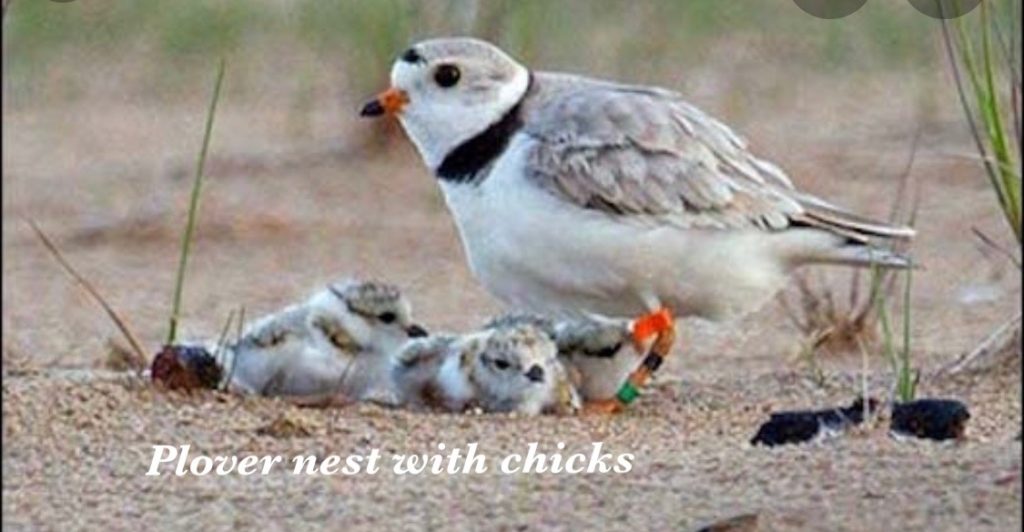
Freezing in their tracts blending into the back ground similar to Eastern Cottontail Rabbit is the only defense before finally fleeing to escape. This lasts approximately another 30 days before they all are able to fly and no longer present an issue with our beach use. The estimated population today is placed at over 8000 today with varying increases and decreases yearly. What does the increasing population mean for fishermen on Long Island beaches? Unfortunately the increase will result in more closed areas the same time of year and the same duration. Basically we will have to learn to respect and deal with the situation in hand. In essence it’s time we as fishermen step up as stewards of the Piping Plovers, if populations don’t increase the restrictions willonly tighten until population reach the goals of Fish and Wildlife.
I’m aware of the many sometimes crazy statements made by fishermen as well as the conspiracy theories that the count and nests are just put out there by the “government” to stop us from fishing. Consultations with independent organizations and individuals through anindependent survey conducted by Montauk Surfcasters Association.
The nests and count are derived from multiple sources not connected with Fish and Wildlife.They are our are neighbors and coworkers with passions unlike our own with fishing. I’ll is time for us to share the sand with our tiny endangered “our own Long Island Piping Plover”How can we share the sand is something we all will have to learn as painful as it seems.
Speaking with fellow surfcaster and Striper enthusiast Steve Sinkevich, a biologist with The Federal Fish and Wildlife Agency, I raised several questions about how we can effectively manage or control access with adhering to Federal guidelines. The questions are soft questions and I’m sure there are thousands more we could ask, Our best course of action is cooperating with local government restrictions regarding Piping Plover closures having attended Multiple Trustees meetings, speaking with the Suffolk County Park Director and local Township Supervisors each formulating a cooperative program to ensure Beach access while protecting the Piping Plovers which Fish and Wildlife is firmly Committed to.While jokes of Piping Plovers taste just like chicken and off hand satirical stories in local papers amuse us and maybe defuse our frustrations, it puts people charged with the responsibility to protect the endangered/ threaten Piping plover on Long Island in charge of preforming a difficult job.

*This is response to a list of those questions from Fish and Wildlife
Biologist Steve Sinkevich.
GENERAL NOTE: With ever-growing demands on our beaches, there are fewer places for piping plovers that depend on Atlantic Coast beaches to raise families, feed, and rest. Beaches are irreplaceable homes for shorebirds and other animals. Piping plovers and other shorebirds have thrived for centuries on coastal beaches that are constantly shifting in response to storms and wave action. With fewer than 4,000 piping plovers on the Atlantic coast, each one makes a difference. Everyday activities on the beach can unintentionally harm piping plovers. Nests, and even piping plovers, are really hard to see. When you get too close to birds, they flush (fly off of their nest or move away from feeding areas). While it might seem minor, this drives them away from what they need to survive – food and a resting place. Imagine if you were hungry and tired, and forces beyond your control kept you away from food all day, and no place felt safe to rest.
It is also important to remember that plover chicks leave the nest within a few hours after hatching and must forage for marine worms and small insects themselves. These chicks may move up to hundreds of meters from the nest site and can’t fly for the first month of their lives. Since we don’t know where they may move (both day and night) in search of food, it is challenging for land owners to manage their beaches for both recreation and plover protection.
Finally, we note that the piping plover is not the only coastal species in peril from coastal development, beach stabilization efforts, recreation, elevated populations of predators or harvesting of important prey resources. The coastal habitats along the Atlantic coast support many other species that are either federally or state-listed/protected, including shorebirds (least tern, Amercian Oystercatcher, red knot, roseate tern, common tern and black skimmers) and plants (seabeach amaranth and seabeach knotweed).
1.Single nest in ORV, fishing and camping use. Why can’t the nests In these high usage areas be moved to a better location.
Response:
A)Moving/collecting a nest or moving the adults would violate the Endangered Species Act (ESA) which prohibits the “take” of a federally listed species ( harm, harass, pursue, hunt, shoot, wound, kill, trap, capture, or collect, or to attempt to engage in any such conduct)
B) A better location to us may not be a better location for plovers. Like other wildlife, the plovers choose nest locations for a reason, and they often return to the same areas in following years. Moving them for either preferred breeding or foraging habitat is very likely to result in egg loss or death of the chick or even the adults. Also, plovers are solitary territorial nesters, moving a nest in another area may create conflict with other plovers which could likely result in nest abandonment.
C) The U.S. Fish and Wildlife Service is responsible for pulling together all the relevant partners to recover protected species like the piping plover, in hopes of removing federal protections one day. The truth is that while plovers are doing OK in some areas, their numbers are perilously low in New York and New Jersey, meaning each one truly makes a difference. Unfortunately, attempts to hatch abandoned eggs in captivity have been studied, and the results do not even approach what happens when birds are able to nest and raise young successfully in the wild. The reality is that there really aren’t many places to move them to, even if we could. Most of the habitat in New Jersey & New York has been manipulated by people enough that there aren’t that many wide open, low sloping sandy beaches with food resources and safe nesting areas.
2. Recently a plover nest was located on Smithpoint Burma Road ( access road to Moriches inlet west side ) this forced closure to the inlet. The nesting pair choice of nesting site is doomed to failure because fledgling chicks can not negotiate the steep dune. approach to ocean feeding.
Response:
A) We are not aware of a plover nest on Burma Road. However, chicks have been observed on this road. Plovers will feed in bayside habitats. In fact, research has shown that plover chicks are more likely to survive when they can move from ocean to bay habitats, which is uncommon on Long Island. Most if not all of that kind of habitat that was restored by Superstorm Sandy was then altered to protect property and provide recreational access. So, the birds may try to cross the road but otherwise they don’t have much choice but to try and feed in either ocean or bay shoreline habitats, provided it is suitable (sparsely vegetated, proper substrate, no or little disturbance).
B) Plover chicks can very agile travelling up steep slopes if they need to and/or can move around impediments. Removing or destroying the nest would violate the law.
C) Refer to “ https://www.fws.gov/northeast/pipingplover/pdf/plover.pdf” for information about the piping plover.
3. Can’t nesting birds in camp grounds, beach trails not be considered into nesting areas, because of economic impact to the surrounding communities.
Response:
A) The thing is, both people and wildlife like the plovers want the same thing — access to a great beach. We have guidelines for people who manage campgrounds and beach trails to help figure out how to balance recreation and access with the responsibility we all have under law to protect rare wildlife. The guidelines are meant to help managers avoid breaking the law — almost like insurance. If it was even possible to prohibit/prevent plovers from nesting in areas where there’s recreation, there would barely be any beach left on Long Island for plovers to breed in. It’s also important to know that as long as you keep your distance, you can walk, fish, kayak, read, relax, beachcomb, take photos, splash in the waves, sunbathe, bike, and watch birds without disturbing them.
B) There are permitting options under the law to help managers balance recreation or other needs. However, there needs to be a net benefit to the species. So if an applicant wanted to keep some areas of the beach open, they would have to improve habitat conditions within the vicinity. Refer to:
https://www.fws.gov/endangered/esa-library/pdf/HCP_Incidental_Take.pdf “ for more information about this permit.
4. Is there an independent evaluation of nesting sites other than that if FWS closings (transparency)
Response:
A)The U.S. Fish and Wildlife Service can only close our own properties, i.e. national wildlife refuges, and a small number of beaches with landowner permission. Nearly all other beach closures on non-Refuge lands (90-95 % of the beaches on Long Island) are done by the land owners (private property, Towns, Villages, County, State or other Federal agencies).
B) The landowners and USFWS/New York State Department of Environmental Conservation (NYSDEC) usually don’t provide specific nest locations because of likely vandalism. However, you could work with the local monitors to volunteer your time to help follow the bird families throughout the season, and get an understanding of where they nest, what they face, etc.
5. What level of nesting pairs will the status of endangered, then be lowered to threaten or less.
Response:
The Atlantic Coast population of piping plovers are federally threatened and state endangered. USFWS recovery goals to de-list the piping plover are provided in the piping plover recovery plan (found at: https://www.fws.gov/northeast/pipingplover/) and are listed as follows:
A) Increase and maintain for five years a total of 2,000 breeding pairs, distributed among four recovery units as follows: Atlantic Canada, 400 pairs; New England, 625 pairs; New York-New Jersey, 575 pairs; Southern (DE-MD-VA-NC), 400 pairs.
B) Verify the adequacy of a 2,000 pair population of piping plovers to maintain genetic diversity over the long term;
C) Achieve five-year average productivity of 1.5 fledged chicks per pair in each of the four recovery units, based on data from sites that collectively support at least 90%, of the recovery unit’s population.
D) Institute long-term agreements to assure protection and management sufficient to maintain the population targets and average productivity in each recovery unit.
E) Ensure long-term maintenance of wintering habitat, sufficient in quantity, quality, and distribution to maintain survival rates for a 2,000-pair population.
The NYSDEC uses the USFWS’s criteria for down-grading the status of the species.
6. How many nesting pairs are there on Long Island.
Response:
403 pairs nested on Long Island in 2018. Combined with 98 pair in New Jersey, the total for the NY-NJ recovery unit was 501 pair while the recovery goal as stated above, is 575 pair for this unit. The total estimated number of pair of breeding piping plovers within the Atlantic Coast population in 2018 was 1,879 pair while the recovery goal is 2,000 pair. Think about it this way… Populations of some other rare animals like polar bears are more than double the number of piping plovers in the world. We just posted the 2018 rangewide (with state breakdown) numbers if you want to check them out: https://www.fws.gov/northeast/pipingplover/ – scroll on the right side to Abundance and Productivity Estimates.
7. With the increasing population of Plovers, wouldn’t the closures increase ?
Response:
If the population increases, there could be an increase in beach closures, although plover management tends to occur in the same vicinities since plovers usually return to the same areas each year. When plover populations increase, they generally expand into sections of the beach within established management areas. In most cases, the closures are occurring in the same areas each year.
8. Why has FWS sprayed herbicides to our beaches to enhance Plover habitat at the increased risk of habitat erosion on the protective outer beach.
Response:
The New York District U.S. Army Corps of Engineers used herbicides in order to fulfill habitat restoration efforts as part of the Fire Island Inlet to Moriches Inlet Fire Island Stabilization Project. Contact the Corps of Engineers for further information. This vegetation management occurred on the bayside of the barrier island and did not diminish the storm damage protection function of the engineered ocean shore dune.
9. Are there ways we can deter Piping Plovers from nesting in certain areas utilized by ORV, camping and fishing ?
Response:
A) Deterring nesting would involve harassing the plovers. As described above, harassment of federally-listed species is a violation of the ESA.
B) The landowner could consider applying for an incidental take permit as described above.
10. Won’t the removal natural predators of Piping Plovers upset current balances of outer beach wildlife and risk creating other imbalances?
Response:
Many of the predators of plovers, including gulls, crows, raccoons and foxes are at elevated populations in coastal areas due to human presence and associated garbage that is left behind that either directly attracts these species or the species (rodents) that they prey upon. The current levels of coastal wildlife populations are not in balance, if they were, the piping plover, along with numerous other coastal species, would not be federally and state-listed.
11. Do the larger populations of
Gulls, Terns, and Killdeer reduce the breeding of Piping Plovers and if so why aren’t controls in place to lower those populations?
While gulls can be predators of piping plovers, terns and killdeer are not. Should it be determined that predators (birds or mammals) are significantly affecting the productivity of piping plovers, predator management efforts, in coordination and permission with the landowner, could be considered and have been implemented in the past to target specific species at specific locations. The installation of exclosures (wire fence cages with space for plovers to enter and exit while keeping predators out) over plover nests is an alternate measure to address egg predation.
So we must learn to live with Piping Plovers and fish alternatively to get to where the fish are, and with Covid19 in the mix remain socially distant.



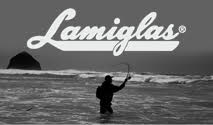


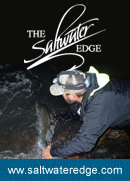
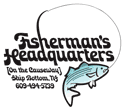




This BS had been going on for over 50 years. We have been hearing the same song over and over. When the birds recover. It’s been 50 years, maybe Nature is trying to tell us something. It’s all about the money these Government agencies are getting to save this bird.ollions to put on their pockets. Another 50 years from now they will still be singing the same song. BS
↓Bird hunters in South America are appreciative at what we’re doing here. Piping Plovers fly south for the winter and considered a culinary delicacy.?
↓Thanks for the informative info Bill.
↓Mike, we do know that ALL gov’t officials are a corrupt lot .
Andy, How many plovers to make a pie?
What exactly does “when the birds recover” mean? When they reach a huge population figure? What then? Won’t there be so many birds that they’ll be laying eggs in even MORE places than they do now? When they do will the wildlife orgs then say “Oh, it’s OK, we don’t need to close that beach. There’s so many birds now that we don’t care if you drive over their eggs and chicks. Go ahead and drive on them beaches!” ? I don’t think so.
↓It seems logical that if after twenty-five years the bird hasn’t recovered despite the billions of dollars spent on restoration, maybe the program is flawed or maybe they just aren’t going to come back. Of course a few things are at play here. #1 Government programs never end. #2 Wildlife biologists will never admit they are wrong and that their means and methods are flawed. #3 Wildlife biologists are typically driven by an evangelical drive that is predicated on saving everything no matter the cost, much like environmental scientists. #4 A real cost benefit survey will never be created(see #1,2,3.) #5 A rational discussion about why we need Plovers will always be avoided. #6 The argument that drives this failed program is that if we don’t save this species, the dominoe theory will take place causing the next in line endangered species to fall and on and on until nothing remains but humanity, a totally unprovable argument.
↓But this argument allows this program to perpetuate with no end in sight.
Sorry I am late to the party. I side with trying to be less selfish and saving a species from extinction. In my minds eye this is just a matter of respect. Yes, it’s a pain in the ass, yes government officials are often if not always corrupt, yes they eat them in South America but they also eat dogs in china and South Korea. The short sightedness of many continues to amaze me. If we all sacrifice a little then collectively we can all contribute to the well being of our planet. BTW, I am pretty much a conservative person however good is good and shortsightedness is dangerous.
Extinction is forever……let the insults begin. I’m with Bill we have to learn to respect our world vs having temper tantrums.
↓